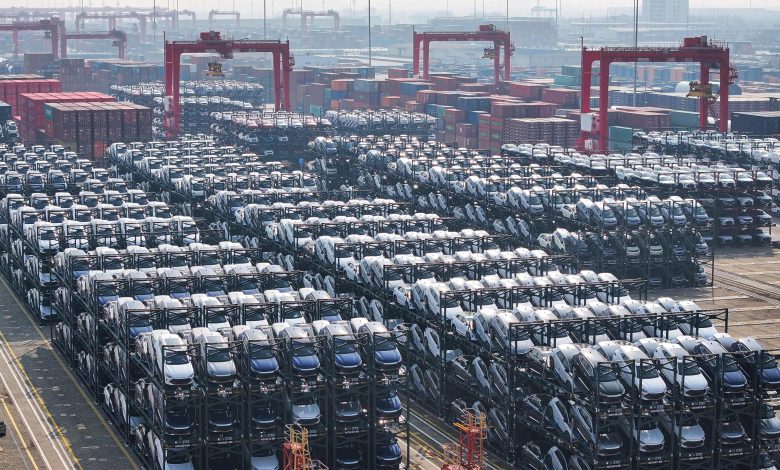China’s exports jump to two-year high in rare boost for economy

CHINA’S exports unexpectedly accelerated in August, reaching their highest value in nearly two years and providing a rare boost to an economy weighed down by deflationary pressures.
Exports climbed nearly 9 per cent from a year earlier to about US$309 billion, the highest since September 2022 and strongly beating estimates. Imports expanded just 0.5 per cent, the customs administration said on Tuesday (Sep 10), leaving a trade surplus of US$91 billion for the month.
Chinese exports have been a bright spot for an economy struggling with a housing slump and deflation. However, the influx of cheap goods to global markets has sparked backlash in the US, South America, and Europe, casting doubt on the sustainability of Beijing’s growth strategy.
“China’s economy continues to show diverging trends with weak domestic demand and strong export competitiveness,” said Zhiwei Zhang, chief economist at Pinpoint Asset Management. “The question is how long exports can stay strong given the weakening US economy and the rising trade tension.”
Investors were not too impressed with the data. China’s benchmark CSI 300 fell as much as 0.7 per cent before erasing losses to close 0.1 per cent higher. Chinese 10-year government bond yield inched towards a new record low, while the offshore yuan was little changed after recent declines against the greenback.
Economic indicators for August so far shows the economy struggling to regain momentum after a rocky start to the second half of the year. Factory activity contracted for a fourth straight month, while core inflation cooled to the weakest in more than three years. More data is expected on Sep 14.
BT in your inbox

Start and end each day with the latest news stories and analyses delivered straight to your inbox.
“An increasingly uncertain export outlook and weak domestic demand – behind the import miss – are flagging risk of undershooting this year’s 5 per cent GDP target,” said Eric Zhu, economist for Bloomberg Economics. “This uneven recovery requires policymakers to focus more on spurring demand at home to fight the deflationary spiral – by stepping up stimulus and speeding up delivery of that already rolled out.”
While the continued expansion of exports is positive for the economy, Chinese companies are having to cut prices to secure sales, with the volume of shipments rising faster than the value in recent months. Data out on Monday showed that producer prices continued to fall, with prices of manufactured goods dropping 2.7 per cent in August from a year earlier.
That rising tide of cheaper Chinese goods is making more and more nations nervous. Some have already imposed tariffs on electric cars, steel and other goods. China’s exports of steel products jumped to 9.5 million tonnes, the most in three months, despite the pushback from trade partners.
Vehicle exports soared to a record. The breakdown of where those cars went is not available yet, but it may show Chinese companies trying to get more electric vehicles into Europe before definitive tariffs kick in.
Overall exports to almost every market grew, with double-digit expansions to the European Union (EU), India and Brazil. Shipments to the US grew 5.1 per cent to the most since September 2022, while exports to Russia also picked up to the highest this year.
Among EU nations, shipments to Germany exceeded US$10 billion for the first time since August 2022 and those to France hit the highest in more than two years.
“The weakness of imports in China mirrors its weak domestic demand,” said Raymong Yeung, chief economist for greater China at Australia & New Zealand Banking Group. “The strong trade surplus will trigger many concerns of China’s overcapacity, the topic of interest of the US and European policymakers.” BLOOMBERG





